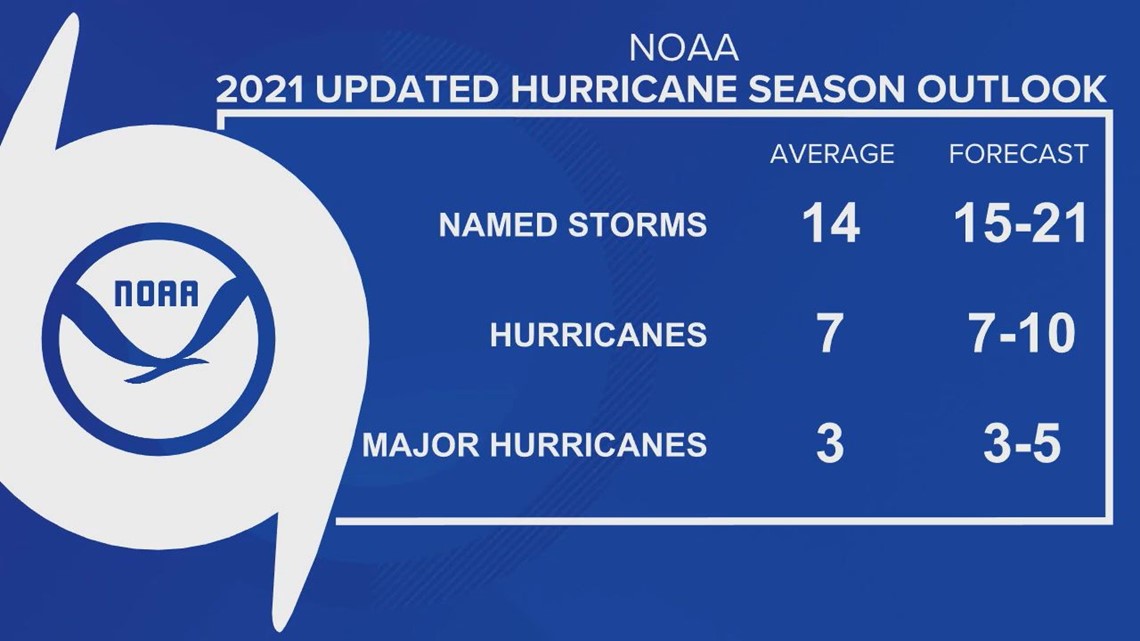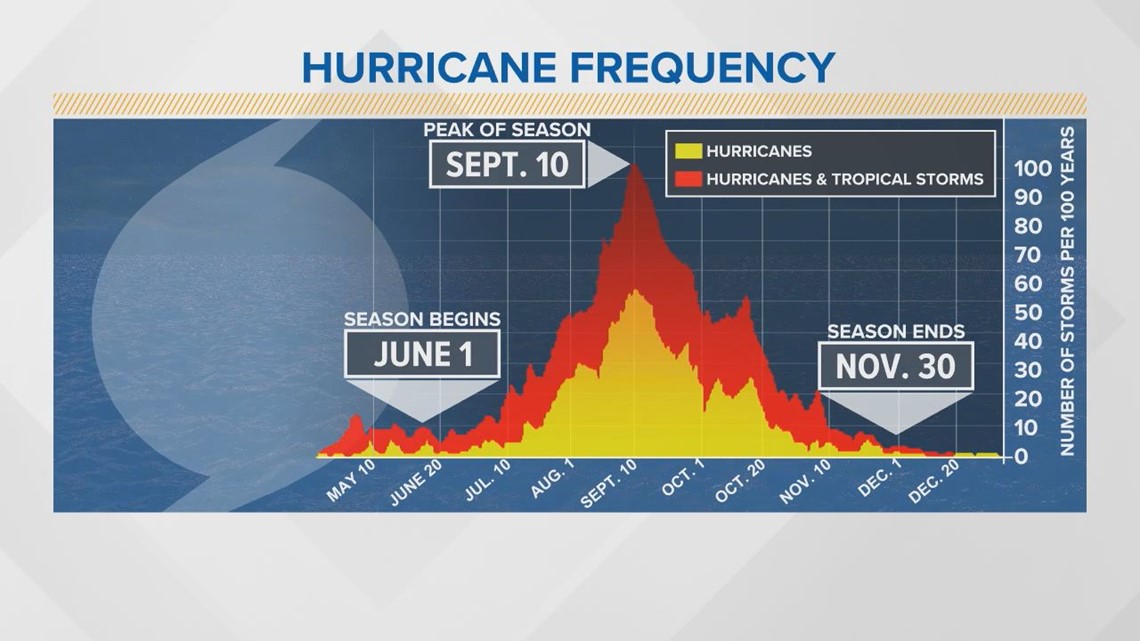YORK, Pa. — The National Oceanic and Atmospheric Administration says that the hurricane season "shows no signs of slowing" in its latest forecast.
The NOAA's mid-season forecast update included a small increase in number of both named storms and hurricanes. The forecast now calls for 15-21 named storms, 7-10 hurricanes, and 3-5 major hurricanes.
This includes the five named storms that we've already had this season, according to Lead Seasonal Hurricane Forecaster Matthew Rosencrans.
“Given the increase in the predicted number of named storms and hurricanes, there is now a 65% chance for an above-normal season," he says.


Reduced wind shear in the tropical Atlantic plus a favorable west African monsoon are both factors that led to the above-average season forecast.
However, meteorologists are not forecasting as active a year as we experienced last year.
“In contrast to last year, sea-surface temperatures are closer to average across the Atlantic main development region," says Rosencrans. "Which contributes to our analysis that this season, while likely above average, is not likely to be as active as last year.”
At this time last year, there were already nine named storms that had formed, while there have only been five so far in the 2021 season.
Despite the past few weeks with little tropical activity, meteorologists are anticipating a busy hurricane season ahead. The busiest part of the season is typically August through October, with a climatological peak on September 10th.


There are currently two systems in the Atlantic Ocean that the National Hurricane Center is watching for low to medium chances of development over the next week.
Rosencrans reiterates that despite the forecast number of storms, everyone should be prepared over the next few months.
“It does only take one storm to have catastrophic impacts on lives and communities. Everyone should know their hurricane risk, have a plan, and be prepared for the upcoming core of the season.”

